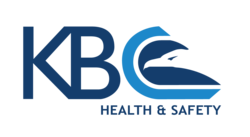KBC to roll out virtual reality safety training in 2022
“The benefit of simulation is that it is not a real-life situation where a possible fatality could result. Instead, any wrong actions can be addressed safely and proactively,” says Pitout. Virtual reality is not a standalone competency module, but is being introduced by KBC as part of a blended learning approach. It has been under intensive development for about six months and will be rolled out later this year.
Blended learning means there is a theoretical component designed to impart the necessary knowledge, which learners are then assessed on, followed by a virtual reality experiential component by means of headset goggles. Pitout highlights that this is completely different to virtual training, which is essentially instructor-led training in a virtual environment. Here learners simply login to a platform like Zoom or Microsoft Teams and receive training as if they were in an actual classroom environment.
“A major benefit of virtual reality is that we can put people from different industries together in one room with the same virtual setting,” points out KBC Regional General Manager Coastal Ruan Janse Van Rensburg. For example, coal and platinum miners can be engaged together to identify common hazards in their respective segments. “It means we can actually see how different workers react in different situations.”
This is made possible by introducing analytics on the back end, an enhancement that KBC is currently refining. “We want to be able to get to a stage where we are actually able to define the risk rating that a particular employee or contractor poses to a company when on-site,” says Janse Van Rensburg. “That level of detail is obviously a long-term goal, as we are still in the process of defining the measurement parameters.”
Pitout adds that analytics will clearly identify if people are making the same mistakes or whether they are identifying similar risks. “It could most definitely even bring out another training need.” For example, if a working-at-height environment is simulated and people are seen to be making the same mistakes, the hazards or risks can be identified for clients and an appropriate virtual reality simulation suggested to remedy that problem. “It might even be that only a refresher course as opposed to more intensive retraining is required.”
The Covid-19 pandemic has seen an increased interest in interventions like virtual reality, says Janse Van Rensburg. “It has pushed clients to not only learn how to use the technology, but also to incorporate it into their own training programmes. This is going to prove to be a vital value-add for our clients.”
KBC is collaborating with various business partners responsible for the technology itself, while it is the training specialist equipped to carry out the necessary training interventions. “We work hand-in-hand producing the modules, providing the necessary guidance in what we require and exactly how to build the simulation,” points out Janse Van Rensburg.
A key focus for the rollout is expected to be the Centralised Induction Training Committee (CITC) in Richards Bay, which has expressed a keen interest in the offering. “The CITC is very open to new thinking and technology. It is not only invaluable for us to have such a partner, but it is hugely beneficial to the mining industry as a whole,” says Janse Van Rensburg.
“Due to the trying times as a result of Covid-19, we want to make our clients more aware that we do offer training services like virtual reality which will allow them to deal with any problems before contractors actually go to site,” concludes Pitout.
Advantages of Virtual Reality
- Immersive learner experience
- Virtual environment
- Learners tend to learn much quicker with practical experience
- Information is retained better by the learner
- Safer learning environment
- Virtual reality safety training allows for endless repetition
- Allows you to test and evaluate your safety procedures
- Provides insightful evaluation of problem areas
Ends
Notes to the Editor
To download hi-res images for this release, please visit http://media.ngage.co.za and click the KBC Health & Safety link to view the company’s press office.
About KBC Health & Safety
KBC Health & Safety is a subsidiary of Workforce Holdings Ltd. We have a national footprint. We train, on average, 120 000 learners every year. Quality is key! From our facilitators to our course material, we are all about EXCELLENCE. Our technology-driven products position our clients to achieve a ‘No Harm’ culture. We customise our programmes and delivery for our clients’ target market.
KBC Health & Safety Contact
Lara Clarke
Marketing Specialist
Phone: (011) 080 0900
Email: lara [at] kbpassport [dot] co [dot] za
Web: www.kbcsa.co.za
Media Contact
Nomvelo Buthelezi
NGAGE Public Relations
Phone: (011) 867-7763
Fax: 086 512 3352
Cell: 083 4088 911
Email: nomvelo [at] ngage [dot] co [dot] za
Web: www.ngage.co.za
Browse the NGAGE Media Zone for more client press releases and photographs at http://media.ngage.co.za

